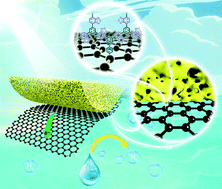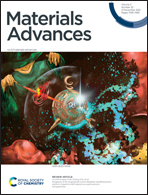Enhancing charge separation in conjugated microporous polymers for efficient photocatalytic hydrogen evolution†
Abstract
The fast recombination of photogenerated electron–hole pairs after charge separation is one of the main factors limiting the achievement of high efficiency of organic semiconductor photocatalysts. Herein, we report a conjugated microporous polymer (CMP)/graphene heterosystem for enhanced photocatalytic hydrogen evolution. Benzothiadiazole-based CMPs were synthesized on graphene sheets Via covalent bonds. Owing to the substantially enhanced charge separation and transfer within the organic semiconductor/conductor heterostructure, the heterosystems exhibited increased photocatalytic hydrogen evolution rates up to 977 μmol g−1 h−1, which is approximately two times as high as that of bulk CMP.



 Please wait while we load your content...
Please wait while we load your content...